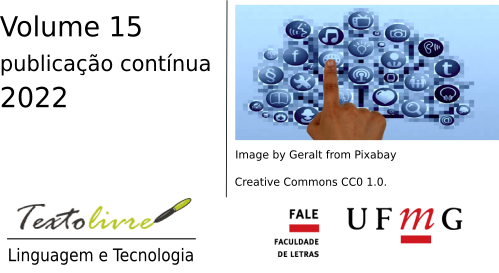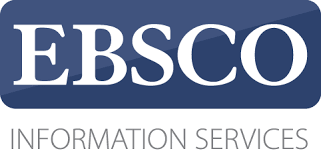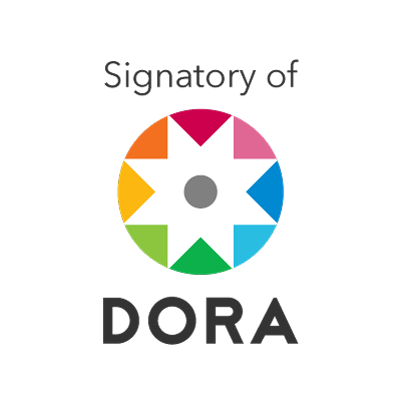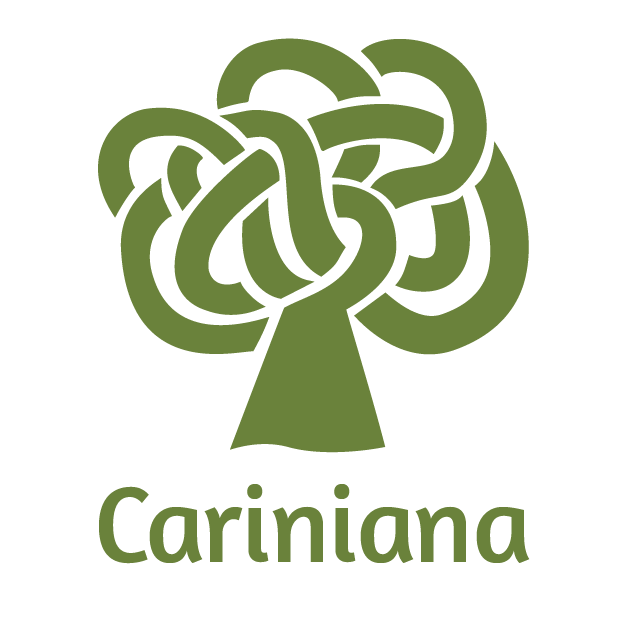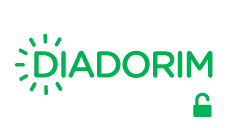O mapa conceitual e o software CmapTools como ferramentas neurodidáticas para melhorar a aprendizagem
DOI:
https://doi.org/10.35699/1983-3652.2022.40725Palavras-chave:
Neurociência, Neurodidática, Mapas conceituais, Mapeamento de conceitoResumo
Quando novos conceitos são desenvolvidos em qualquer mudança científica e, claro, no campo da educação, em muitos casos gera-se a ideia de que é algo novo que vai afetar radicalmente, no nosso caso, a forma de educar e de aprender. Seria este o caso da Neurodidática? É necessário contrastar essas novas conceituações da pesquisa, como no caso da neurociência e da neurodidática, que atribuem o rótulo de "neuro" a muitas estratégias didáticas tradicionalmente utilizadas. Uma infinidade de modelos "neuropedagógicos" surgiram em torno da neurociência, visando fornecer ao profissional da educação ferramentas poderosas para melhorar o aprendizado com base nos avanços da neurociência. No caso do mapa conceitual de Novak, sua eficácia como ferramenta de apresentação de conhecimento especializado e como promotora de aprendizagem significativa tem sido demonstrada nas últimas décadas, permitindo que erros conceituais sejam facilmente detectados. Atualmente, essa eficácia didática foi comprovada a partir das pesquisas realizadas com técnicas neurocientíficas (CAT, TOC, MRI, fNIRs, entre outras) que apresentamos neste artigo. Essas investigações confirmam seu valor metodológico, que podemos chamar de neurodidático, através da evidência de atividade cerebral diferencial ou nível de esforço neurocognitivo que ocorre quando mapas conceituais são comparados com outras ferramentas didáticas.
Downloads
Referências
AGRA, G. y col. Analysis of the concept of Meaningful Learning in light of the Ausubel’s Theory. Revista Brasileira de Enfermagem, v. 72, n. 1, p. 248-255, feb. 2019. ISSN 1984-0446, 0034-7167. DOI: 10.1590/0034-7167-2017-0691. Disponible en: http://www.scielo.br/scielo.php?script=sci_arttext&pid=S0034-71672019000100248&tlng=en. Acceso en: 12 sep. 2022.
AMARAL, J. A. A. do y FREGNI, F. Applying Neuroscience Concepts to Enhance Learning in an Online Project-Based Learning Centered Course. Journal of Problem Based Learning in Higher Education, v. 9, n. 2, 2021.
ANWAR, R. y col. Systematic Literature Review of Knowledge Sharing Barriers and Facilitators in Global Software Development Organizations Using Concept Maps. IEEE Access, v. 7, p. 24231-24247, 2019. ISSN 2169-3536. DOI: 10.1109/ACCESS.2019.2895690. Disponible en: https://ieeexplore.ieee.org/document/8630947/. Acceso en: 12 sep. 2022.
AUSUBEL, D. P.; NOVAK, J. D. y HANESIAN, H. Educational Psychology: A Cognitive View. [S.l.]: Holt, Rinehart y Winston, 1968. ISBN 9780030899515.
BEAM, E. y col. Mapping the Semantic Structure of Cognitive Neuroscience. Journal of Cognitive Neuroscience, v. 26, n. 9, p. 1949-1965, sep. 2014. ISSN 0898-929X, 1530-8898. DOI: 10.1162/jocn_a_00604. Disponible en: https://direct.mit.edu/jocn/article/26/9/1949/28256/Mapping-the-Semantic-Structure-of-Cognitive. Acceso en: 12 sep. 2022.
BEZERRA, J. De J. y LIMA ARRAIS, M. N. de. Cmap tools: um suporte para o professor. Revista de Pesquisa Interdisciplinar, v. 3, n. 1, ago. 2019. ISSN 2526-3560. DOI: 10.24219/rpi.v3i1.705. Disponible en: http://revistas.ufcg.edu.br/cfp/index.php/pesquisainterdisciplinar/article/view/705. Acceso en: 12 sep. 2022.
CAÑAS, A. J.; CARFF, R. y LOTT, J. eCMap: An embeddable web-based concept map editor. In: PROCEEDINGS of the Eighth International Conference on Concept Mapping, Medellı́n, Colombia. [S.l.: s.n.], 2018.
CAÑAS, A. J. y NOVAK, J. D. Mapas conceptuales¿ Qué son y cómo elaborarlos? Eduteka, No. 3-2018, Universidad Icesi, n. 3, p. 1-48, 2018.
COLGAN, L. A. y col. PKCα integrates spatiotemporally distinct Ca2+ and autocrine BDNF signaling to facilitate synaptic plasticity. Nature Neuroscience, v. 21, n. 8, p. 1027-1037, ago. 2018. ISSN 1097-6256, 1546-1726. DOI: 10.1038/s41593-018-0184-3. Disponible en: http://www.nature.com/articles/s41593-018-0184-3. Acceso en: 12 sep. 2022.
DENNETT, D. C. La conciencia explicada: una teoría interdisciplinar. Barcelona: Ediciones Paidós Ibérica, 1995. ISBN 9788449301704.
DOMINGUEZ, L. C. y VEGA, N. V. Efectos del mapa conceptual sobre la síntesis de información en un ambiente de aprendizaje interactivo: Un estudio preexperimental. Educación Médica, v. 21, n. 3, p. 193-197, mayo 2020. ISSN 15751813. DOI: 10.1016/j.edumed.2018.08.002. Disponible en: https://linkinghub.elsevier.com/retrieve/pii/S1575181318302523. Acceso en: 12 sep. 2022.
DOPP, A. R. y col. Integrating implementation and user-centred design strategies to enhance the impact of health services: protocol from a concept mapping study. Health Research Policy and Systems, v. 17, n. 1, pág. 1, dic. 2019. ISSN 1478-4505. DOI: 10.1186/s12961-018-0403-0. Disponible en: https://health-policy-systems.biomedcentral.com/articles/10.1186/s12961-018-0403-0. Acceso en: 12 sep. 2022.
ENRIQUE BIGNÉ, J. y col. The concept mapping approach in marketing: an application in the travel agencies sector. Qualitative Market Research: An International Journal, v. 5, n. 2, p. 87-95, jun. 2002. ISSN 1352-2752. DOI: 10.1108/13522750210423724. Disponible en: https://www.emerald.com/insight/content/doi/10.1108/13522750210423724/full/html. Acceso en: 12 sep. 2022.
FLÓREZ URIBE, A. M.; AYALA PIMENTEL, J. O. y CONDE COTES, C. A. Los mapas conceptuales una, Una estrategia para mejorar el proceso de enseñanza aprendizaje de la neuroanatomía. In: SÁNCHEZ, J.;
CAÑAS, A. J. y NOVAK, J. D. (Ed.). Proceedings of Fourth Int. Conference on Concept Mapping. Anais... Viña del mar: [s.n.], 2010. pág. 298.
GAINES, B. R. y col. Knowledge management for distributed enterprises. In: PROC. KAW-96, Banff, Canada. [S.l.: s.n.], 1996.
GIJÓN PUERTA, J. Formación por competencias y competencias para la formación, perspectivas desde la Investigación. Madrid, España: Editorial síntesis, SA, 2016.
GIJÓN PUERTA, J. La didáctica como enclave teórico de la formación de educadores para la planificación social. In: LUCENA, F. J. H. y col. (Ed.). Innovación Docente e Investigación Educativa en la Sociedad del Conocimiento. Madrid: Dykinson S. L., 2020. p. 559-574.
GONZÁLEZ GARCÍA, F. M. El mapa conceptual y el diagrama UVE: Recursos para la enseñanza superior en el siglo XXI. [S.l.]: Narcea Ediciones, 2008. v. 17.
GONZÁLEZ GARCÍA, F. M. y col. Los modelos de conocimiento como agentes de aprendizaje significativo y de creación de conocimiento. Los modelos de conocimiento como agentes de aprendizaje significativo y de creación de conocimiento, Ediciones Universidad de Salamanca, p. 107-132, 2013.
GOSWAMI, U. Neuroscience and education: from research to practice? Nature reviews neuroscience, Nature Publishing Group, v. 7, n. 5, p. 406-413, 2006.
HOWARD-JONES, P. A. Neuroscience and education: myths and messages. Nature Reviews Neuroscience, Nature Publishing Group, v. 15, n. 12, p. 817-824, 2014.
HSU, L.-L.; PAN, H.-C. y HSIEH, S.-I. Randomized comparison between objective-based lectures and outcome-based concept mapping for teaching neurological care to nursing students. Nurse education today, Elsevier, v. 37, p. 83-90, 2016.
HU, M. Neuroscience for engineering sustainability: measuring cognition during design ideation and systems thinking among students in engineering. 2018. Tesis (Doctorado) – Virginia Tech.
HU, M. y col. Empirical evidence that concept mapping reduces neurocognitive effort during concept generation for sustainability. Journal of Cleaner Production, Elsevier, v. 238, pág. 117815, 2019.
JAMISON, T. y LIS, G. A. Engaging the learner by bridging the gap between theory and clinical competence: the impact of concept mapping and simulation as innovative strategies for nurse-sensitive outcome indicators. Nursing Clinics, Elsevier, v. 49, n. 1, p. 69-80, 2014.
JORGENSON, O. Brain scam? Why educators should be careful about embracing’brain research’. In: TAYLOR & FRANCIS, 4. THE Educational Forum. [S.l.: s.n.], 2003. v. 67, p. 364-369.
KHALED GIJÓN, M. y col. Caracterización de los elementos clave que influyen en el comportamiento violento en el medio penitenciario y orientaciones para la formación de educadores. Universidad de Granada, 2017.
KHALED GIJÓN, M.; LIZARTE SIMÓN, E. J. y GIJÓN PUERTA, J. El andragogo en el entorno penitenciario:¿ realidad o reto? In: MARÍN MARÍN, J. A. y TRUJILLO TORRES, J. M. (Ed.). Hacia un modelo de investigación sostenible en educación. [S.l.: s.n.], 2021. pág. 89.
KOH, E. J. y col. Mapping neuroscientists’ perceptions of the nature and effects of public visibility. Science Communication, SAGE Publications Sage CA: Los Angeles, CA, v. 38, n. 2, p. 170-196, 2016.
LIZARTE SIMÓN, E. J. y GIJÓN PUERTA, J. Ambientes de aprendizaje para las nuevas-y viejas-metodologı́as en la Educación Superior. In: ALONSO, S. et al. (Ed.). Investigación, Innovación docente y TIC. Nuevos horizontes educativos. Madrid: Dykinson, 2019. p. 689-701.
MANANDHAR, U. The Effects of Concept Mapping on Design Neurocognition: An Empirical Study Measuring Changes in the Brain when Defining Design Problems. 2022. Tesis (Doctorado) – Virginia Tech.
MARCO, C. C. y TANIA, H. H. Mapas conceptuales y aprendizaje significativo en estudiantes del 2o grado de secundaria en el área de lenguaje y literatura, turno mañana de la Institución Educativa de Aplicación Mixta Fortunato L. Herrera-Cusco. 2018. Tesis (Doctorado) – Universidad Nacional de San Antonio Abad del Cusco.
MICHALSKI, G. V. y COUSINS, J. B. Differences in stakeholder perceptions about training evaluation: a concept mapping/pattern matching investigation. Evaluation and Program Planning, Elsevier, v. 23, n. 2, p. 211-230, 2000.
MOORE, J. W. Visualizing Irregular Adversaries: Applied Concept Mapping in the Military and Security Domain. In: CAÑAS, A. J. y col. (Ed.). Proceedings of the Fifth Int. Conference on Concept Mapping. [S.l.]: La Valetta, 2012.
NONAKA, I. The knowledge-creating company. In: THE economic impact of knowledge. [S.l.]: Routledge, 2009. p. 175-187.
NONAKA, I. y TAKEUCHI, H. The knowledge-creating company. Harvard business review, v. 85, n. 7/8, pág. 162, 2007.
NOVAK, J. D. Concept mapping: A useful tool for science education. Journal of research in science teaching, Wiley Online Library, v. 27, n. 10, p. 937-949, 1990.
NOVAK, J. D. y GOWIN, D. B. Learning how to learn. [S.l.]: cambridge University press, 1984.
PEDRAJAS, A. P.; MARTÍNEZ, M. V. y QUINTERO, J. L. L. Innovación educativa con CmapTools en la formación inicial del profesorado de tecnologı́a de enseñanza secundaria. In: ADAYA PRESS. EDUNOVATIC 2017. Conference proceedings: 2nd Virtual International Conference on Education, Innovation and ICT. 12-14 December, 2017. [S.l.: s.n.], 2018. p. 258-263.
PREIß, G. Neurodidaktik: theoretische und praktische Beiträge. [S.l.]: Centaurus-Verlag-Gesellschaft, 1996.
RAMOS, J. L. G. Aproximación a los mapas conceptuales y su utilización práctica en las aulas mediante el software cmaptools. In: FÓRUM INTERNACIONAL DE COMUNICACIÓN Y RELACIONES PÚBLICAS (FÓRUM XXI). LIBRO de Actas del X Congreso Universitario Internacional sobre Contenidos, Investigación, Innovación y Docencia:(CUICIID 2020). [S.l.: s.n.], 2020. pág. 560.
SÁNCHEZ, C. E. Blanco, Carlos. Historia de la neurociencia: el conocimiento del cerebro y la mente desde una perspectiva inter-disciplinar. Ideas y Valores, v. 65, n. 160, p. 266-277, mar. 2016. ISSN 2011-3668, 0120-0062. DOI: 10.15446//ideasyvalores.v65n160.53729. Disponible en: http://revistas.unal.edu.co/index.php/idval/article/view/53729. Acceso en: 12 sep. 2022.
SANTANA, R. C. Diseños curriculares, modelos pedagógicos y planificación educativa en Neuroeducación: perspectivas y controversias. Docencia Universitaria, v. 20, n. 1-2, p. 47-68, 2019.
SCHROEDER, N. L. y col. Studying and constructing concept maps: A meta-analysis. Educational Psychology Review, Springer, v. 30, n. 2, p. 431-455, 2018.
SHEALY, T. y HU, M. Evaluating the potential of neuroimaging methods to study engineering cognition and project-level decision making. In: EPOC-MW Conference, Engineering Project Organization Society, Fallen Leaf Lake, CA USA. [S.l.: s.n.], 2017.
SUINAGA, M. I. M. y JIMÉNEZ, D. P. CMAP Tools como herramienta tecnológica en la creación de mapas conceptuales a nivel universitario. In: FÓRUM INTERNACIONAL DE COMUNICACIÓN Y RELACIONES PÚBLICAS (FÓRUM XXI). CUICIID 2019: Congreso universitario internacional sobre la comunicación en la profesión y en la Universidad de hoy IX: Contenidos, investigación, innovación y docencia: 23 y 24 octubre. [S.l.: s.n.], 2019. pág. 482.
SWANSON, L. W. y LICHTMAN, J. W. From Cajal to connectome and beyond. Annu Rev Neurosci, v. 39, p. 197-216, 2016.
WILSON, E. O. Consilience: The unity of knowledge. [S.l.]: Vintage Books, 1998.
WILSON, E. O. Sociobiology: The new synthesis. [S.l.]: Harvard University Press, 2000.
Downloads
Publicado
Edição
Seção
Licença
Copyright (c) 2022 José Gijón Puerta, Meriem Khaled Gijón, Ana Matas Lara, Pablo García Sempere

Este trabalho está licenciado sob uma licença Creative Commons Attribution 4.0 International License.
Este é um artigo em acesso aberto que permite o uso irrestrito, a distribuição e reprodução em qualquer meio desde que o artigo original seja devidamente citado.

